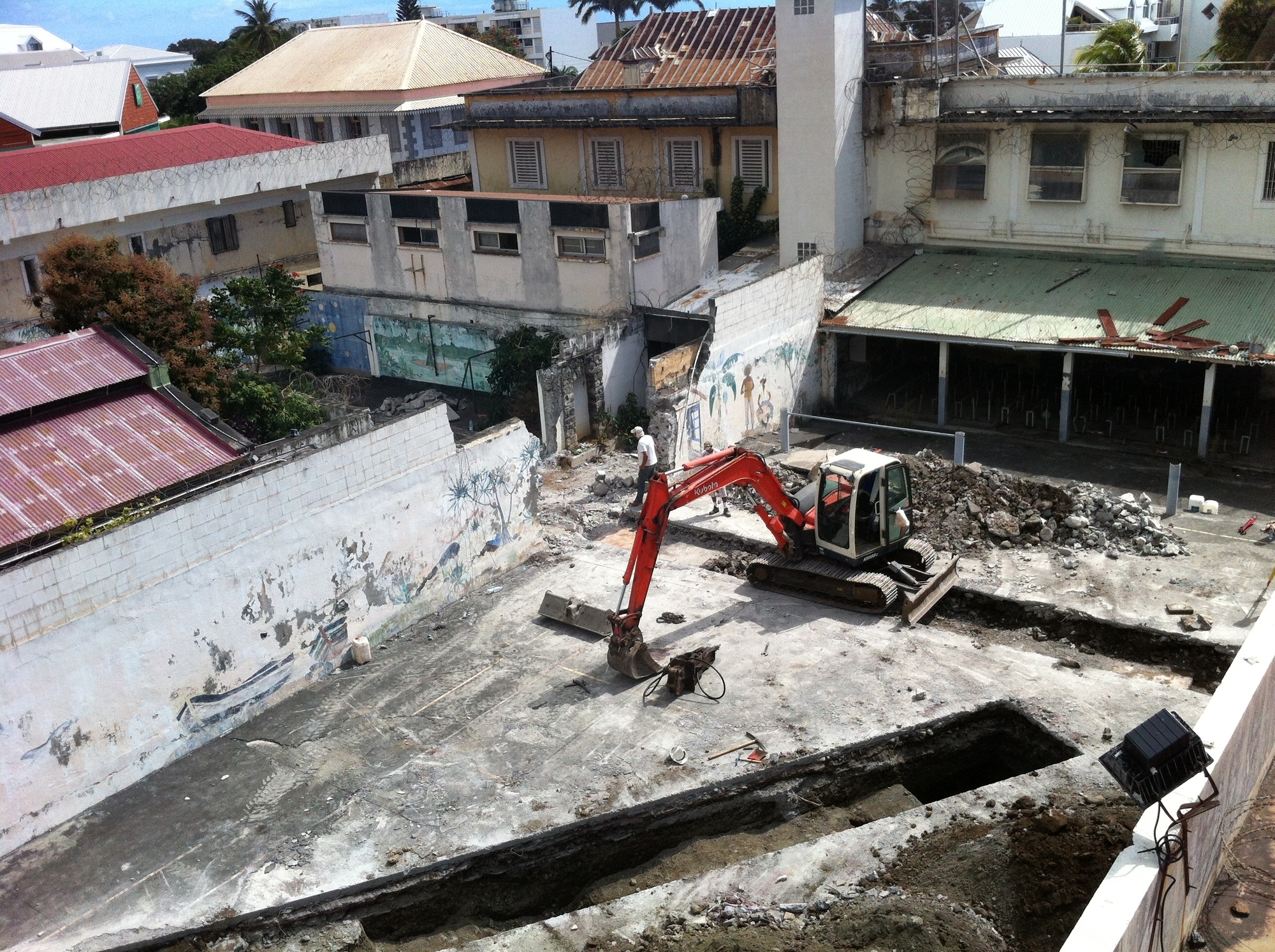
- Home
- Archaeology on Reunion Island
- Sites
- Saint-Denis
- Juliette Dodu Prison
- Cilaos
- La Possession
- Saint-André
- Saint-Benoît
-
Saint-Denis
- 119 rue Jean Chatel
- Cells in the Saint-Bernard leprosaria
- Caserne Lambert
- Railway station
- La Grande Chaloupe station
- Îlet à Guillaume
- Lazarets de la Grande Chaloupe
- Schneider et Cie steam locomotive
- Marine du Butor
- New Western Entrance
- La Providence
- Place du Général de Gaulle
- Port du Barachois
- Juliette Dodu Prison
- Quadrilatère océan
- The "Redoute Bourbon"
- Rue de la Batterie
- Saint-Joseph
- Saint-Leu
- Saint-Louis
- Saint-Paul
- Saint-Pierre
- Saint-Philippe
- Sainte-Rose
- Sainte-Suzanne
- Salazie
The Juliette Dodu prison in Saint-Denis closed in 2008, more than 250 years after it first opened. The Réunion prefecture then planned to rehabilitate the buildings and conduct archaeological research on the site. An evaluation was made in 2013.
A long history
A "detention block" was opened in the Governor’s Palace around 1718. In 1771, the colony bought a plot on which to build a prison that, although refurbished and extended, served the same purpose until 2008. Archival documents dating from 1771 suggest the northern part of the site was used to detain prisoners while the south was occupied by administrative buildings. The prison changed over time and was significantly altered in 1839 when the administrative offices were moved to make more room for the prison service, followed by the demolition of the central jail in 1846.
Archaeological remains
Archaeologists found the remains of construction works carried out in 1846 in the form of a 15- to 20-centimetre thick layer that was once part of a floor. They also discovered four earlier walls made from volcanic rocks, one of which, associated with a brown earth soil horizon, could not be identified on plans. Three other walls forming a single built frame with a gravel floor were once part of the central jail "where dangerous men were held". To the east, archaeologists also discovered a vertical alignment of tiles for a garden bordered by a gutter.
Portable finds included fragments of crockery and tobacco pipes and the remains of pork and beef bones. No trace of the prison remained.
Associated media
Open Media Library

General plan (Saint-Denis, Juliette Dodu prison, 2013)

Former plans of Saint-Denis prison

Central prison, Trench 2 (Saint-Denis, Juliette Dodu prison, 2013)

Central prison, Trench 3 (Saint-Denis, Juliette Dodu prison, 2013)

Garden beds, Trench 3 (Saint-Denis, Juliette Dodu prison, 2013)

